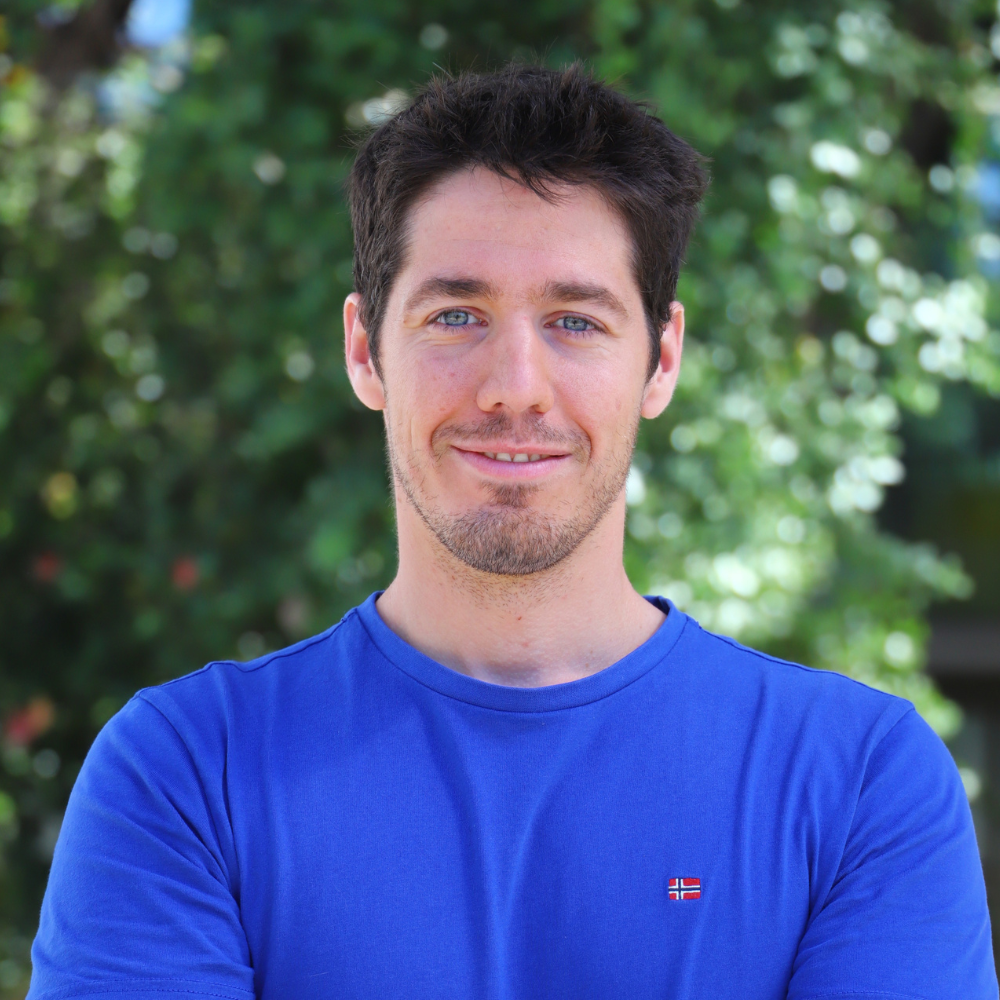18
Santiago Tassara ● Profesor Asistente

Doctor en Ciencias, Mención Geología; Universidad de Chile
Licenciado en Geología; Universidad Nacional de La Plata, Argentina
Descripción
Santiago Tassara recibió su entrenamiento académico en la Universidad Nacional de La Plata (Argentina), donde obtuvo su Licenciatura en Geología, en la Universidad de Barcelona (España), donde recibió el grado de Máster en Recursos Minerales, y en la Universidad de Chile, donde se graduó como Doctor en Ciencias, Mención Geología. Desde el 2019 hasta el 2022, se desempeñó como “Académico Postdoctoral Bateman” en la Universidad de Yale (EE. UU).
Su investigación busca comprender cómo los metales base y preciosos se concentran en la corteza terrestre formando depósitos minerales. Para esto, Santiago utiliza observaciones de campo en combinación con herramientas mineralógicas y geoquímicas para entender los procesos magmáticos y geodinámicos que controlan el flujo y concentración de elementos formadores de mena durante la evolución y migración de magmas y fluidos hidrotermales en la litosfera terrestre.
4
- REVISTA Geothermics
- 2024
Gas geothermometry, soil CO2 degassing, and heat release estimation to assess the geothermal potential of the Alpehue Hydrothermal Field (Sollipulli volcano, Southern Chile)
• Daniele Tardani • Marco Taussi • Philippe Robidoux • Pablo Sánchez-Alfaro • Pamela Pérez-Flores
- REVISTA Chemical Geology
- 2024
Osmium and oxygen isotope constraints on magma-crust interactions and the transport of copper at the roots of arcs
• Santiago Tassara • Jay J. Ague • Duncan S. Keller • Alan D. Rooney • Jordan A.G. Wostbrock
- REVISTA Communications Earth & Environment
- 2024
The orientation of intra-arc crustal fault systems influences the copper budget of magmatic-hydrothermal fluids
• Daniele Tardani • Santiago Tassara • Pablo Sánchez-Alfaro • Martin Reich • Pamela Pérez-Flores
- REVISTA Nature Geoscience
- 2023
Links between large igneous province volcanism and subducted iron formations
• Duncan S. Keller • Santiago Tassara • Leslie J. Robbins • Cin-Ty A. Lee • Jay J. Ague
- REVISTA Earth-Science Reviews
- 2023
Massive Jurassic slab break-off revealed by a multidisciplinary reappraisal of the Chon Aike silicic large igneous province
• Santiago Tassara • Daniele Tardani
- REVISTA Nature Geoscience
- 2022
Slab-derived devolatilization fluids oxidized by subducted metasedimentary rocks
• Jay J. Ague • Santiago Tassara • Megan E. Holycross • Ji-Lei Li • Elizabeth Cottrell
- REVISTA Geology
- 2022
Osmium isotopes fingerprint mantle controls on the genesis of an epithermal gold province
• Santiago Tassara • Alan D. Rooney • Jay. J. Ague • Diego Guido • Martin Reich
- REVISTA Economic Geology
- 2022
A Role for Crustal Assimilation in the Formation of Copper-Rich Reservoirs at the Base of Continental Arcs
• Santiago Tassara • Jay J. Ague
- REVISTA Geochimica et Cosmochimica Acta
- 2021
Subduction zone sulfur mobilization and redistribution by intraslab fluid-rock interaction
• Ji-Lei Li • Esther M. Schwarzenbach • Timm John • Jay J. Ague • Santiago Tassara
- REVISTA Geology
- 2021
The deep magmatic cumulate roots of the Acadian orogen, eastern North America
• Santiago Tassara • Jay J. Ague • Victor Valencia
- REVISTA Geochimica et Cosmochimica Acta
- 2020
Post-melting oxidation of highly primitive basalts from the southern Andes
• Santiago Tassara • Martin Reich • Claudia Cannatelli • Brian A. Konecke • Dominica Kausel
- REVISTA Nature Communications
- 2020
Fluxing of mantle carbon as a physical agent for metallogenic fertilization of the crust
• Daryl E. Blanks • David A. Holwell • Marco L. Fiorentini • Marilena Moroni • Andrea Giuliani
- REVISTA Frontiers in Earth Science
- 2020
Unraveling the Effects of Melt-Mantle Interactions on the Gold Fertility of Magmas
• Santiago Tassara • Martin Reich • Brian A. Konecke • José María González-Jiménez • Adam C. Simon
- REVISTA Lithos
- 2020
Mineralogy of the HSE in the subcontinental lithospheric mantle –An interpretive review
• Santiago Tassara
- REVISTA Contributions to Mineralogy and Petrology
- 2019
Magmatic platinum nanoparticles in metasomatic silicate glasses and sulfides from Patagonian mantle xenoliths
• José María González-Jiménez • Josep Roqué-Rosell • Abigail Jiménez-Franco • Santiago Tassara • Fernando Nieto
- REVISTA Lithos
- 2018
Highly siderophile elements mobility in the subcontinental lithospheric mantle beneath southern Patagonia
• Santiago Tassara • José M. González-Jiménez • Martin Reich • Edward Saunders • Ambre Luguet
- REVISTA Nature Communications
- 2017
Plume-subduction interaction forms large auriferous provinces
• Santiago Tassara • José M. González-Jiménez • Martin Reich • Manuel E. Schilling • Diego Morata
- REVISTA Mineralium Deposita
- 2016
Fe-Ni-bearing serpentines from the saprolite horizon of Caribbean Ni-laterite deposits: new insights from thermodynamic calculations
• Santiago Tassara
- 1241146
- Abril 2025 - Marzo 2028
Determination of magma fertility and sulfide saturation for giant porphyry copper deposits in central Chile: A platinum-group element perspective
- 11240035
- Marzo 2024 - Abril 2027
Tracing the links between the volatile composition and oxygen fugacity of magmas, their ore fertility, and crustal thickness: A regional scale investigation of the Miocene to Mio-Pliocene arc segment of the Andes of central Chile
- 1241146
- Marzo 2024 - Marzo 2028
Magmatic and Metallogenic Evolution of the MaricungaEl Indio Belt
- EQM230002
- Diciembre 2023 - Septiembre 2024